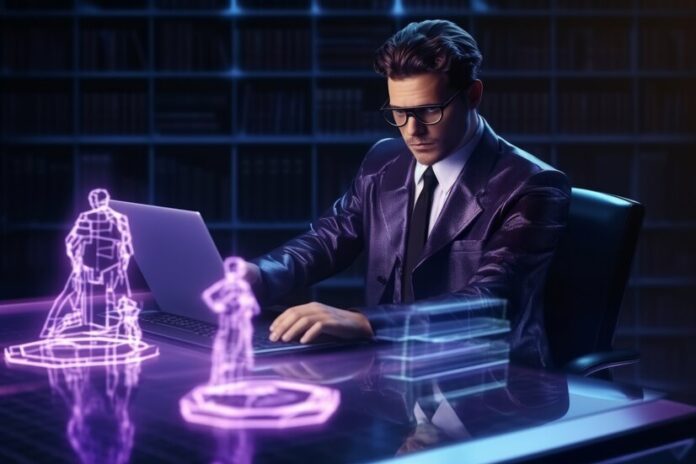In the world of security, the combination of cutting-edge generation with skilled human oversight bureaucracy is the spine of effective strategies. Security corporations nowadays are confronted with an array of demanding situations that span from cyber threats to bodily breaches.
The key to addressing those threats lies in hanging a stability among technological equipment and the irreplaceable human element. This article explores how protection businesses can optimize this balance to enhance safety and effectiveness.
The Role of Technology in Security
Technology has revolutionized the security company in numerous approaches. Advanced surveillance structures, biometric identification, and synthetic intelligence (AI) are only some examples that have more desirable security features. These technologies offer numerous advantages:
Enhanced Surveillance Capabilities: Modern surveillance systems make use of high-definition cameras and drones to screen areas which can be in any other case hard for human guards to observe continuously.
Data Analysis: AI and device learning algorithms can system vast quantities of statistics to perceive styles or anomalies that can indicate a security threat.
Speed and Efficiency: Automation can deal with repetitive duties greater quicker and as it should be than people, along with scanning for security breaches or verifying identities at checkpoints.
Despite these improvements, technology by itself isn’t always foolproof and can sometimes fail to capture the nuances of a security threat like an educated human can.
The Indispensable Human Element
While technology can beautify the breadth of security insurance, the intensity of that coverage frequently is based on human instinct and revel in. Humans bring numerous irreplaceable strengths to protection:
Decision-Making in Ambiguity: Security personnel are better ready to address ambiguous situations in which human conduct needs to be interpreted inside context, something era often fails to do.
Flexibility and Adaptability: Humans can quickly adapt to surprising modifications in their environment, while machines require reprogramming or updates to alter.
Moral and Ethical Judgments: Security decisions frequently involve moral considerations, such as balancing protection with privacy rights, that are best controlled by humans.
Integrating Technology with Human Oversight
The most suitable strategy for protection organizations includes leveraging the strengths of both technology and human employees. Here are some methods companies are finding this balance:
Augmented Capabilities: Using era to augment human skills rather than replace them. For example, facial reputation technology can alert protection personnel to capability threats, who can then make informed choices primarily based on extra context.
Real-time Data for Rapid Response: Implementing systems that provide real-time records can assist protection groups reply more effectively. Human operators use these records to make short selections during protection incidents.
Training and Continuous Learning: As new technologies are adopted, schooling programs for security employees have to evolve. This guarantees that the human team of workers isn’t always best adept at using generation but can also complement it with their natural skills.
Feedback Loops: Establishing remarks loops where protection personnel can offer insights into the functionality and efficacy of safety technologies. This can assist in refining technological tools and techniques.
Case Studies and Success Stories
Many leading protection corporations have efficiently incorporated technology with human oversight.
For example, a farmend safety corporation used AI-driven analytics to reveal video feeds, which helped reduce false alarms by ninety five%. Human operators had been then capable of attention on verifying and responding to proper threats, enhancing standard security performance.
Technological Advancements
To further the integration of technology with human skills, safety groups are making an investment in superior schooling programs.
These programs are designed to educate safety employees at the latest technologies and how to utilize them efficiently alongside traditional security features.
Building Teams for Hybrid Security Operations
Another method for balancing era with human oversight is the formation of hybrid operation groups. These teams include tech-savvy specialists and experienced protection employees.
By operating together, those groups can cover all factors of security operations, from installing and maintaining state-of-the-art security systems to undertaking physical patrols and managing emergency responses.
Implementing Scalable Security Solutions
Security threats can vary greatly in nature and scale, necessitating scalable solutions that can be adjusted in keeping with the extent of chance and unique patron desires.
Security groups are developing modular systems that allow for smooth integration of each generation and human factors.
Ethical Implications
As protection organizations set up greater superior technology, particularly the ones concerning surveillance and information analysis, moral issues emerge as paramount.
It’s vital for organizations to expand pointers that balance safety with admiration for privacy and civil liberties.
Leveraging Community Engagement
Security is not just about technology and personnel; it also involves network engagement. Security groups are more and more recognizing the importance of engaging with the communities they serve to create a collaborative protection environment.
Human protection teams play a vital function on this by constructing beliefs and collecting community insights, which can regularly offer vital statistics that technological solutions cannot capture. This technique not only enhances safety but also fosters a safer community surroundings.
Conclusion
As protection threats turn out to be extra sophisticated, the demand for an integrated technique will keep growing. Security businesses that can efficiently stabilize technological advancements with professional human oversight are better placed to conform to converting environments and shields in opposition to each physical and virtual threats.


